Potfest 2022 - ceramics
There was so much to see at this year's Potfest that I am posting what I particularly liked in two posts, this one and one on sculpture.
Claire Conrad:
Artist's statement: 'In my work I try to capture the poignant beauty and drama of weathering and corrosion - the point of balance between existence and decay. I find the vessel form the most satisfying to use and I enjoy the traditional method of wheel-throwing, which adds to the sense of capturing time. I like the simplicity and elegance of form achievable with throwing-ribs to eliminate finger ridges. I use 'T' material: strong, high-quality, coarse clay, that I mix with a smooth white stoneware to make it throwable. Forms are thrown slowly and meticulously to give thin-walled, yet strong subtly rugged, finely balanced pieces. Large forms are thrown in several sections, with much refining, when leather hard, similar to a hand-built, coiled pot'.
Mark Dally:
Craig Underhill:
Sara Moorhouse's pieces are hand thrown and turned, the movement of the wheel often reflected in the slight asymmetry of the form. The lines are applied by returning the bisque fired bowl to the wheel and painted with ceramic colour by hand. A matt glaze is then applied to stabilise and enhance the coloured surface.
Moorhouse explains how she 'found that colours behave differently when viewed across three-dimensional space than a two-dimensional surface, particularly on the inner bowl form where illusions can appear much stronger'.
Barbara Gittings:
Barbara Gittings is a new potter for me, and I love her work. I had a long chat with her about the way she makes her pots: she uses the nerikomi technique, which sounds very complicated to me, but the results are fabulous.
Her statement on her website: 'During my earlier career in the fashion industry as a designer and pattern cutter, I began to explore clay as an alternative medium to fabric. In fashion, the layering of textiles and the power of the cut merge to find new balances and forms, the biomorphic and geometric held in tension. My work in clay continues to explore this. I'm fascinated by the geometry in nature, especially as growth and random chaotic forces skew and distort the initial perfect symmetry, leading to biomorphic and irregular forms.
My ceramics explore the multi-layered effects nature creates via the laying down of strata, weathering and erosion. I endeavour to catch echoes of all of this in my work whilst trying to embrace chance, the accidental, and, as Henri Bergon said, the unforeseeable novelty'.
One theory as to its origins is that in the late 15th century Japanese shogun Ashikaga Yoshimasa sent his favourite damaged tea bowl back to China for repair. When it was returned, repaired with ugly metal staples, he charged his craftsmen with the task of finding a more aesthetically pleasing method of repair.
Kintsugi embraces the philosophy of wabi-sabi, finding beauty in the flawed or imperfect. It treats breakage and repair as part of the history of the piece, rather than something to be disguised. It's seen as enhancing the piece, rather than something to be disguised. It's seen as enhancing the beauty of the piece, whilst reminding us of the transience of our lives.
I choose to use other metals, such as copper, bronze or aluminium, or powdered pearl, occasionally leaving the urushi naked, depending on the piece.... I invite you to embrace the idea of beauty in imperfection and the fact that the work's fragility is emphasised and celebrated'.
Jin Eui Kim:








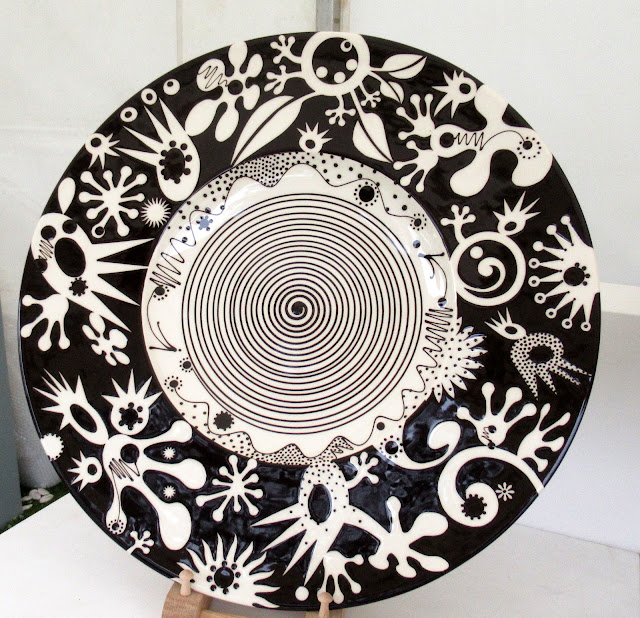


















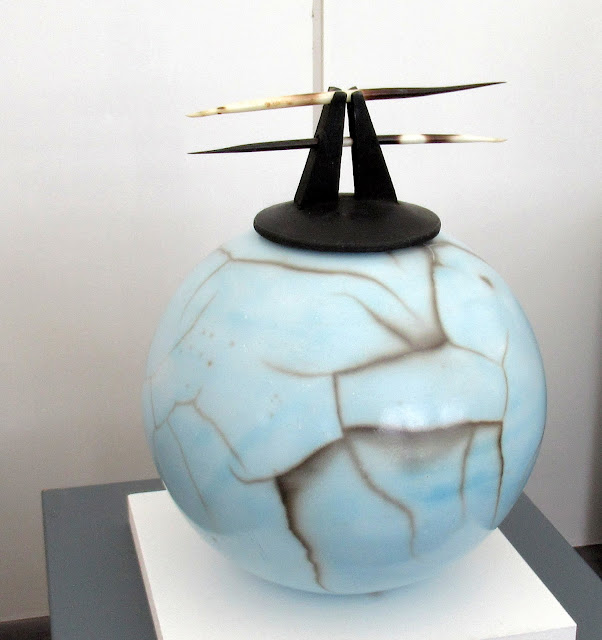



















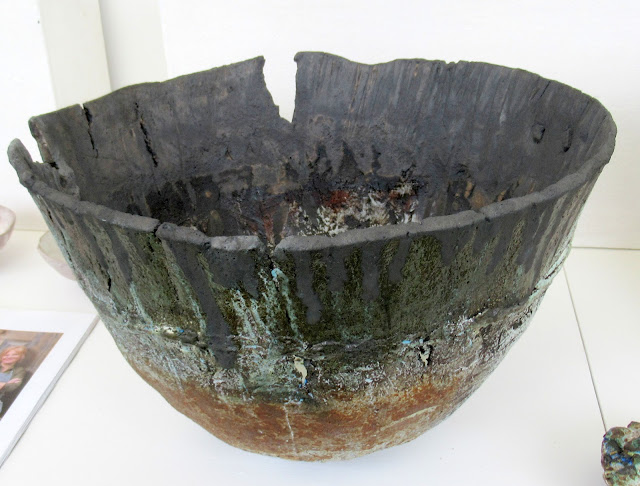













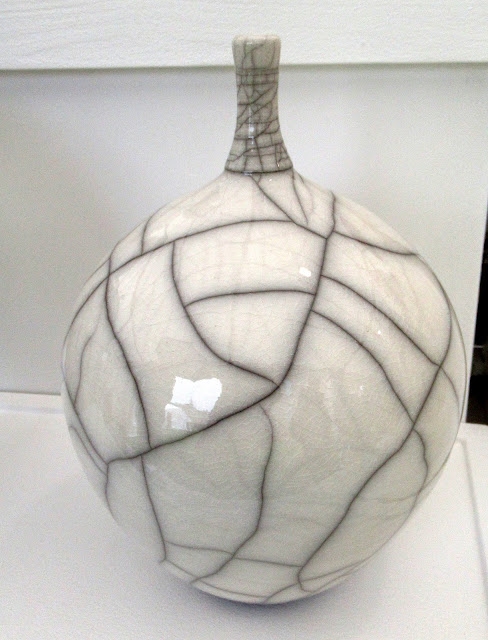












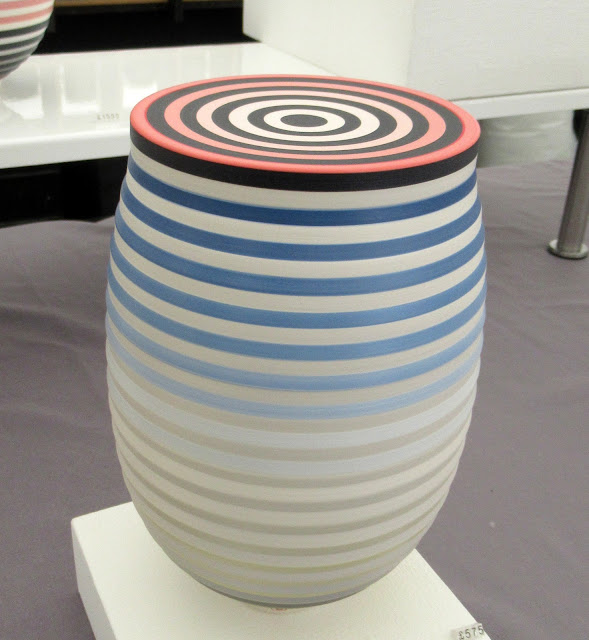

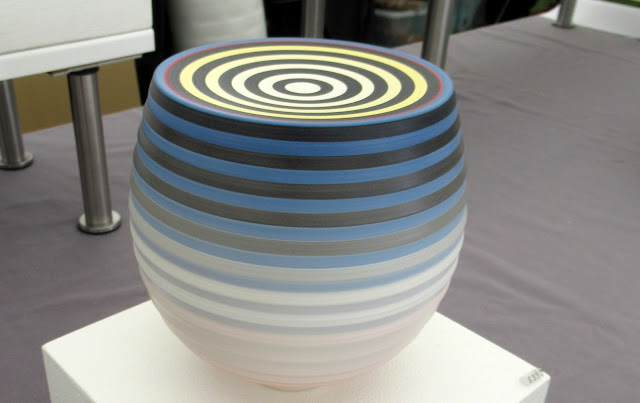
Thanks for the mention, glad you enjoyed the show.
ReplyDeleteI always try to go to Potfest, and always enjoy it. I love your pots, and I own one of your teapots which I really like.
Delete